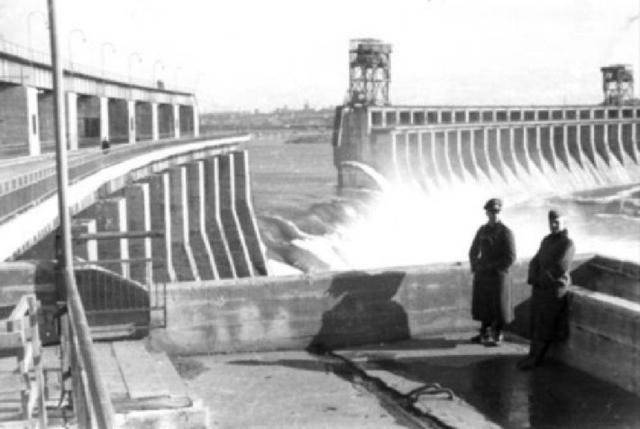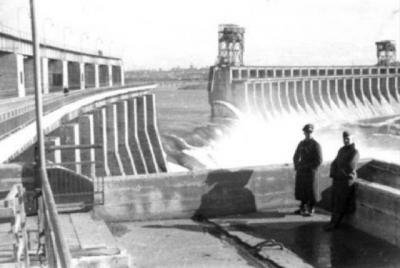The repercussions of the destruction of the Kakhovka Dam in southern Ukraine, an area under Russian control, continue to unfold. Water levels today, Friday, have risen to over 6 meters, threatening to flood more towns and villages, especially as predictions indicate levels may rise to 12 meters in the coming days. The dam contains a volume of water comparable to Salt Lake in Utah, approximately 18 million cubic meters, and is a hydroelectric facility with a capacity of 350 megawatts, which poses a threat to agriculture in southern Ukraine and water supplies to the Crimean Peninsula. The motive behind its destruction, whether carried out by the Russians or the Ukrainians, appears to be a game of a new war that the thousands of civilians displaced by the floods are paying for, reminiscent of a past tragedy where over 30,000 of their ancestors perished on the day Joseph Stalin decided to destroy the Dnieper Dam to prevent the German armies' advance into the Soviet Union, marking a historical catastrophe recognized as one of the most heinous crimes. So, what is the story of the Great Lenin Dam?
#### The Lenin Dam
When Lenin, the Russian leader and head of the Bolshevik Revolution, was asked what communism meant to him, he replied that it was "power to the people plus electricity." His plan included building dams, enriching agricultural lands, and establishing hydroelectric stations to supply cities with energy, and later cooling the Zaporizhzhia nuclear plant through the then-largest dam in Europe, the Dnieper. On August 29, 1941, the Russians blew up the Dnieper Dam in Zaporizhzhia, which fed the Dniprostroi power plant, evacuating Dnipropetrovsk, a major industrial center in Ukraine. The Soviet spokesman Luzovsky informed the press: "We have blown up the Dnieper Dam so that this first child (the dam) of the Soviet five-year plan does not fall into the hands of Hitler's gangsters." This marked the policy of "nothing for Germany."
The destruction of the Dnieper Dam, which powered the strongest hydroelectric station in Europe and took eight years to complete, was classified as one of the most dramatic acts of destruction in Russia since the burning of Moscow in 1812. Thus, the large-scale transfer of electrical energy was halted, replaced again with alternative generators. The intentional explosion flooded villages along the Dnieper River, resulting in thousands of civilian and military casualties from both sides of the conflict. After capturing the area, the Germans partially rebuilt the dam. Two years later, as Soviet forces expelled them from Ukraine, the Nazis blew up the area for the second time. At the end of the war, the Soviets rebuilt the dam. The flood waves led to the deaths and displacement of between 20,000 to over 100,000 civilians, as well as Red Army officers crossing the river. In the end, the dam suffered severe damage, with the power hall nearly destroyed.
The American researcher H.R. Knickerbocker noted in that year: "The Russians have now proven through their destruction of the great dam in Dnipropetrovsk that they truly intend to burn the land before Hitler, even if it means destroying their most precious property. Dniprostroi was nearly a subject of worship for the Soviet people. Its destruction indicates a spirit of resistance beyond anything we could imagine. I know what this dam meant to the Bolsheviks. It was the largest and the most exciting and the most popular among all the grand projects of the first five-year plan. When built, the Dnieper Dam was the largest on Earth, thus occupying a place in the imagination and affection of the Soviet people that is difficult for us to comprehend."
#### A Prior Warning
A quick look at published articles in newspapers that addressed the importance of the Kakhovka Dam reveals that plans for its explosion have been in the works for years. Western media have repeatedly warned that a scheme was being prepared to demolish the dam, which would put the lives of thousands of civilians at imminent risk similar to the Dnieper Dam disaster; nevertheless, no party bothered to put relief plans in place to save lives. Thus, residents were left to their fates in a journey of drowning in the flames of war. Are there other dams at risk of being breached somewhere in a world obsessed with power?




